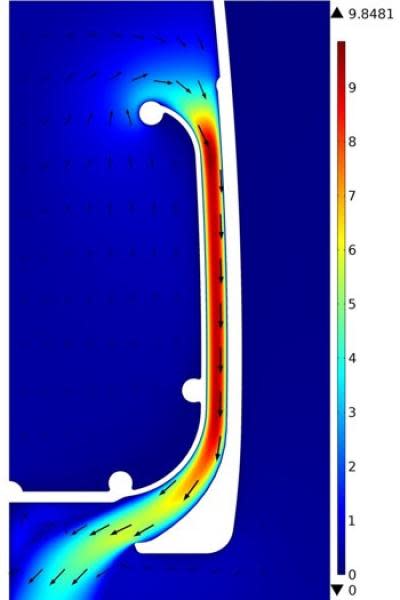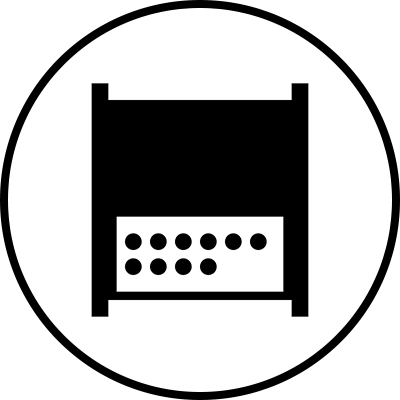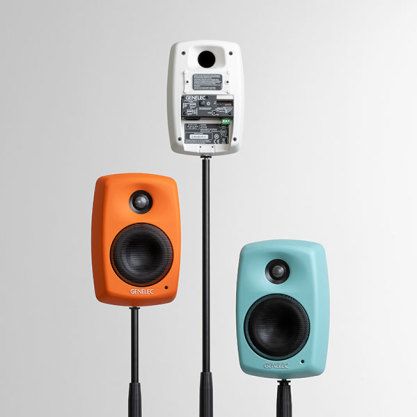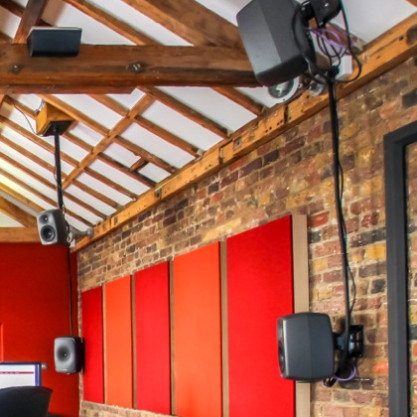The following has evaluated to null or missing:
==> cmsEntity.getLocalizedField(profile, "/entity/fields/title") [in template "20116#20152#259373" at line 10, column 25]
----
Tip: If the failing expression is known to be legally refer to something that's sometimes null or missing, either specify a default value like myOptionalVar!myDefault, or use <#if myOptionalVar??>when-present<#else>when-missing</#if>. (These only cover the last step of the expression; to cover the whole expression, use parenthesis: (myOptionalVar.foo)!myDefault, (myOptionalVar.foo)??
----
----
FTL stack trace ("~" means nesting-related):
- Failed at: #assign productTitle = cmsEntity.getL... [in template "20116#20152#259373" at line 10, column 1]
----
1<#include "${templatesPath}/227222">
2
3<#if cmsEntity?has_content>
4
5<#assign mainImage = "" >
6<#if cmsEntity.getLocalizedField(profile, "/entity/assets/mainImage")?has_content>
7 <#assign mainImage = cmsEntity.getLocalizedField(profile, "/entity/assets/mainImage") >
8</#if>
9
10<#assign productTitle = cmsEntity.getLocalizedField(profile, "/entity/fields/title")>
11<#assign products = [] >
12<#if cmsEntity.getField(profile, "/entity/relationships/bundles")?has_content>
13 <#assign bundles = cmsEntity.getField(profile, "/entity/relationships/bundles") >
14 <#assign products = cmsBundleService.getProductsInBundle(profile, bundles.get(0).id)>
15</#if>
16
17<#assign mobileImg = "">
18<#if cmsEntity.getLocalizedField(profile, "/entity/assets/mobileMainImage")?has_content>
19 <#assign mobileMainImage = cmsEntity.getLocalizedField(profile, "/entity/assets/mobileMainImage") >
20 <#if mobileMainImage.url?has_content>
21 <#assign mobileImg = mobileMainImage.url>
22 </#if>
23</#if>
24
25<#assign portalUrl = themeDisplay.getPortalURL() >
26<#assign currentURL = portalUrl + themeDisplay.getURLCurrent() >
27<@appendHTMLMetas currentURL cmsEntity />
28
29<div class="main-image-container">
30
31<div class="parallax-window" data-parallax="scroll"></div>
32
33<#if cmsEntity.getField(profile, "/entity/fields/summary")?has_content >
34 <#assign summary = cmsContentFormatterService.getMarkdown(cmsEntity.getLocalizedField(profile, "/entity/fields/summary"))>
35</#if>
36
37
38 <@sectionHeader title="${title}" menuTitle="${menuTitle}" cssClasses="background" id="solutions-main-image"/>
39 <div class="gradient-layer-black-left"></div>
40
41 <div class="bg-content">
42 <div class="first-section">
43 <h1 class="product-page-heading text-light">${productTitle}</h1>
44 <div class="row justify-content-between">
45 <div class="col-12 col-md-7 article-content">
46 <#if summary?has_content>
47 <div class="product-page-intro text-light">${summary}</div>
48 </#if>
49
50
51 <#if cmsEntity.getField(profile, "/entity/relationships/bundleSpecifications/properties/shortTermMaxSpl")?has_content >
52 <#assign spl = cmsEntity.getField(profile, "/entity/relationships/bundleSpecifications/properties/shortTermMaxSpl") >
53 <div class="row text-white mb-4">
54 <div class="col-12 col-xl-6">
55 <div class="media product-page-media">
56 <@imageThumbnail src="${getProductSpecificationIconUrl('SPL_white')}" id="" cssClasses="mr-3" thumbnail="techSpecIcon"/>
57 <div class="media-body"> <p class="mt-0 text-bolder"><@liferay.language key="spl"/></p> <p class="small">${spl} dB</p></div>
58 </div>
59 </div>
60 </#if>
61
62 <#assign
63 frequencyResponseAccuracy = ""
64 frequencyResponseLowCutoff = ""
65 frequencyResponseHighCutoff = ""
66 >
67
68 <#if cmsEntity.getField(profile, "/entity/relationships/bundleSpecifications/properties/frequencyResponseAccuracy")?has_content >
69 <#assign frequencyResponseAccuracy = cmsEntity.getField(profile, "/entity/relationships/bundleSpecifications/properties/frequencyResponseAccuracy")>
70 </#if>
71 <#if cmsEntity.getField(profile, "/entity/relationships/bundleSpecifications/properties/frequencyResponseLowCutoff")?has_content >
72 <#assign frequencyResponseLowCutoff = cmsEntity.getField(profile, "/entity/relationships/bundleSpecifications/properties/frequencyResponseLowCutoff")>
73 </#if>
74 <#if cmsEntity.getField(profile, "/entity/relationships/bundleSpecifications/properties/frequencyResponseHighCutoff")?has_content >
75 <#assign frequencyResponseHighCutoff = cmsEntity.getField(profile, "/entity/relationships/bundleSpecifications/properties/frequencyResponseHighCutoff")>
76 </#if>
77
78 <#if frequencyResponseAccuracy?has_content && frequencyResponseLowCutoff?has_content && frequencyResponseHighCutoff?has_content>
79 <div class="col-12 col-xl-6">
80 <div class="media product-page-media">
81 <@imageThumbnail src="${getProductSpecificationIconUrl('AccuracyOfFrequencyResponse_white')}" id="" cssClasses="mr-3" thumbnail="techSpecIcon"/>
82 <div class="media-body">
83 <p class="mt-0 text-bolder"><@liferay.language key="accuracy-of-frequency-response"/></p>
84 <p class="small">
85 ${frequencyResponseLowCutoff} Hz -
86 ${frequencyResponseHighCutoff/1000} kHz
87 ±${frequencyResponseAccuracy} dB </p>
88 </div>
89 </div>
90 </div>
91 </div>
92 </#if>
93
94 <hr class="bg-white">
95
96 <#if products?has_content>
97 <p class="mt-4 text-bolder text-light"><@liferay.language key="products-in-this-solution"/></p>
98 <#list products as product>
99 <#assign i = product?index>
100 <#assign quantity = bundles.get(0).relationships.productEntries.get(i).properties.quantity>
101 <#assign image = product.getLocalizedField(profile, "/entity/assets/listingImage")>
102 <#assign alt = "">
103
104 <#assign listingImageRel = product.getLocalizedField(profile, "/entity/relationships/listingImage/locales")!"" >
105
106 <#if listingImageRel?has_content && !listingImageRel.properties.isNull("altText")>
107 <#assign alt = localizeField(listingImageRel.properties.altText, profile.getCMSLangCode())>
108 </#if>
109
110 <#assign name = product.getLocalizedField(profile, "/entity/fields/title")>
111
112 <div class="solution-products">
113
114 <div class="media">
115 <div class="media-img mr-2">
116 <img alt="${alt}" src="${image.url}?w=70&fm=png&fl=png8">
117 </div>
118 <div class="media-body align-self-center">
119 <span class="h2 text-bold text-light">
120 ${quantity}
121 </span>
122 <span class="text-light"> × </span>
123 <span class="text-bold text-light">${name}</span>
124 </div>
125 </div>
126 </div>
127 </#list>
128 </#if>
129 </div>
130 </div>
131 </div>
132 </div>
133
134 <@sectionFooter/>
135
136 <@printSubmenu />
137
138 <#if mainImage?has_content && mainImage.url?has_content>
139 <@parallaxBackground url="${mainImage.url}?w=1250&fm=jpg&q=85" speed="0.4" mobileUrl="${mobileImg}"/>
140 </#if>
141
142</div>
143
144 <style>
145 .solution-products >span{
146 vertical-align: middle;
147 }
148
149 .background {
150 background: none;
151 }
152
153 .bg-content {
154 position: relative;
155 min-height: 90vh;
156 }
157
158.background {
159 position: relative;
160}
161
162@media (min-width: 992px) {
163 .background {
164 min-height: calc(100vh - 80px);
165 }
166}
167
168 /*
169 .has-control-menu .background {
170 height: calc(100vh - 56px - 50px + 500px);
171 }
172 */
173
174 .solution-products .media-img {
175 text-align: center;
176 }
177
178 .solution-products .media-body span {
179 vertical-align: middle;
180 }
181
182 /* yliajaa olemassaolevan */
183 #mainImage .container-padding hr {
184 margin: 1rem auto;
185 border: 1px solid black;
186 }
187
188 .text-link {
189 cursor: pointer;
190 }
191
192 @media (min-width: 992px){
193 .first-section .row {
194 width: 100% !important;
195 }
196 }
197
198 @media (min-width: 992px) {
199 .first-section > .row, .first-section .product-page-heading {
200 width: 50%;
201 }
202 }
203
204 </style>
205
206</#if>

S360

SPL
118 dB

Respuesta en frecuencia
36 Hz - 22 kHz (-6dB)

Dimensiones
H 530 x W 360 x D 360 mm, with Iso-Pod™ (ver en pulgadas)

1234AC

SPL
125 dB

Respuesta en frecuencia
29 Hz - 21 kHz (-6dB)

Dimensiones
H 489 x W 1210 x D 412 mm, (ver en pulgadas)

7382A

SPL
129 dB

Respuesta en frecuencia
15 Hz - 100 Hz (-6dB)

Dimensiones
H 625 x W 1400 x D 558 mm, (ver en pulgadas)

Smart Active Monitoring (SAM™) and GLM™ calibration technology

Directivity Control Waveguide (DCW™) Technology

Active Crossovers

Intelligent Signal Sensing (ISS™) Technology

Laminar Integrated Port (LIP™) Technology

Protection Circuitry

Optimised Amplifiers

Room Response Compensation

Versatile Mountings

Bass Management System
Networked Smart Active Monitor (SAM™) Systems feature automatic calibration to the environment.

Now, more than ever, audio productions are engineered in tighter, more confined working environments. This increases acoustic problems and lowers the reliability of monitoring. At the same time, an audio engineer's need to trust a reliable and precise monitoring system that reproduces sound neutrally and without distortion has not changed.
Built upon the solid electro-acoustic foundations of our 1200, 8000 and 7000 Series products, Genelec SAM Systems are today’s most advanced and flexible monitoring solutions. They are an indispensable tool for audio professionals, as they automatically adapt to the acoustic environment and correct for level, delay and room anomalies. SAM Systems are controlled using Genelec's proprietary Loudspeaker Manager (GLM™) network and software, enabling you to build a highly flexible and reliable monitoring system.
GLM is a highly intuitive and powerful monitor control networking system that manages connectivity to all SAM studio monitors and subwoofers on the network. GLM software features adjustment of level, distance delay and flexible room response compensation equalisation with our state-of-the-art, highly robust AutoCal™ 2 algorithm automated calibration system. All parameters and settings are stored in system setup files or saved in each individual monitor or subwoofer, if the GLM network needs to be disconnected.
Also, all acoustical features of SAM Systems can be optimised and tailored for different working styles or client demands. Additionally, even if the monitors or the production projects move between rooms, you can expect SAM technology to provide the highest consistency in monitoring, providing neutral soundstage imaging with low distortion – in each environment.
Genelec SAM Systems offer a comprehensive, solution-oriented, intelligently networked product range supporting analogue and digital signals in virtually any working environment.
Directivity Control Waveguide (DCW™) for flat on and off-axis response.

A revolutionary approach was taken by Genelec in 1983 with the development of its Directivity Control Waveguide (DCW™). We have developed and refined this technology over more than 30 years to greatly improve the performance of direct radiating multi-way monitors.
The DCW technology shapes the emitted wavefront in a controlled way, allowing predictable tailoring of the directivity (dispersion) pattern. To make the directivity uniform and smooth, the goal is to limit the radiation angle so that the stray radiation is reduced. It results in excellent flatness of the overall frequency response as well as uniform power response. This minimises early reflections and provides a wide and controlled listening area achieving accurate sound reproduction on and off-axis.
Minimised early reflections and controlled, constant directivity have another important advantage: the frequency balance of the room reverberation field is essentially the same as the direct field from the monitors. As a consequence, the monitoring system's performance is less dependent on room acoustic characteristics.
Sound image width and depth, critical components in any listening environment, are important not only for on-axis listening, but also off-axis. This accommodates not only the engineer doing their job, but also others in the listening field, as is so often the case in large control rooms.
DCW™ Technology key benefits:
- Flat on and off-axis response for wider usable listening area.
- Increased direct-to-reflected sound ratio for reduced control room coloration.
- Improved stereo and sound stage imaging.
- Increased drive unit sensitivity up to 6 dB.
- Increased system maximum sound pressure level capacity.
- Decreased drive unit distortion.
- Reduced cabinet edge diffraction.
- Reduced complete system distortion.
Active crossover operating at low signal levels.

Audio electronic crossovers allow the audio signal to be split into separate frequency bands that are separately routed to individual power amplifiers, which are then connected to specific transducers optimised for a particular frequency band.
Active crossovers come in both digital and analogue varieties. Genelec digital active crossovers include additional signal processing, such as driver protection, delay, and equalisation.
Genelec analogue active crossover filters contain electronic components that are operated at low signal levels suitable for power amplifier inputs. This is in contrast to passive crossovers that operate at the high signal levels of the power amplifier's outputs, having to handle high currents and, in some cases, high voltages.
In a typical two-way system the active crossover needs two power amplifiers — one for the woofer and one for the tweeter.
The active crossover design offers multiple benefits:
- The frequency response becomes independent of any dynamic changes in the driver's electrical characteristics or the drive level.
- There is increased flexibility and precision for adjusting and fine-tuning each output frequency response for the specific drivers used.
- Each driver has its own signal processing and power amplifier. This isolates each driver from the drive signals handled by the other drivers, reducing inter-modulation distortion and overdriving problems.
- The ability to compensate for sensitivity variations between drivers.
- The possibility to compensate for frequency and phase response anomalies associated with a driver’s characteristics within the intended pass-band.
- The flat frequency response of a high-quality active loudspeaker is a result of the combined effect of the crossover filter response, power amplifier responses and driver responses in a loudspeaker enclosure.
Using the active approach enables frequency response adjustments and optimisation of the full loudspeaker system, placed in various room environments, without expensive external equalisers. The end result is a simpler, more reliable, efficient, consistent and precise active loudspeaker system.
Intelligent Signal Sensing (ISS™) for power consumption reduction in stand-by mode.

Introduced early 2013, Genelec’s Intelligent Signal-Sensing technology has been developed to meet with both European Union ErP Directives and Genelec's own ambitious sustainability standards.
The Intelligent Signal Sensing, ISS™ circuitry tracks the signal input of the loudspeaker and detects if it is in use. If the ISS circuit does not find any audio on the input for a period of time, it sets the loudspeaker to a low-power sleep state and the loudspeaker will consume less than 0.5 watts. When an input signal is detected, the loudspeaker immediately turns itself on.
Additionally an ‘ISS Disable’ switch is located on each product’s back plate next to the other room response controls. First, when the mains power switch of the loudspeaker is set to 'ON', the ISS™ auto-start function (low-power sleep state on/off) of the loudspeaker is active.

If this function is not desired, the ISS™ function can be disabled by setting the 'ISS Disable' switch on the back panel to 'ON' position. In this mode, the monitor is only powered on and off using the mains power switch.
Note that the mains power switch will always turn the monitor off completely.
Laminar Integrated Port (LIP™) allows for precise bass reproduction.

Genelec’s choice for vented (or bass reflex) enclosures dates back to 1978 and the first active monitor developed by Genelec, the S30. Research to improve the performance and efficiency of reflex ports has been pursued ever since.
A typical reflex port enclosure features a tube and an opening area. To avoid turbulences in the tube the air flow should not meet any acute angles as this would generate noise, compression, distortion and losses of the total radiated energy. To minimize the air flow speed, both the tube and its cross section have to be large. Often, the outer enclosure dimensions become a limitation, because a long tube will not fit in the available volume anymore.
The M Series features two vent tubes having opening stretching across half of the enclosure depth to address these specific issues. The novel patent-pending Laminar Integral Port, LIP™, has been flow-optimized using computer-based finite element models to achieve low distortion and high efficiency even at very high audio output levels.

The reflex ports are integrated in the NCE enclosure during the moulding process, avoiding the need for separate additional components. The cross-section plot (Figure) demonstrates the efficient flow characteristics of the port. The natural installation orientation of the M Series is vertical and to allow easy placement of the monitor against a wall, the M Series ports opening face downwards, in the space under the monitor.
The novel Laminar Integrated Port, LIP™, bass reflex system provides accurate low frequency response and faithful tonal reproduction characteristics.
Sophisticated drive unit protection circuitry for safe operation.

When working in critical audio production environments it is essential that monitoring systems remain reliable and functional at all times. One of the main reasons behind Genelec’s excellent success in broadcasting environments is the reliability of our products and a key element behind the reliability is the internal protection circuitry found in all products since 1978.
The protection circuitry prevents driver failures by detecting signal levels, and in case of sudden peaks or constantly too high levels, taking the signal level down automatically. Of course this feature does not affect the sound quality in any way when working within the specifications of the loudspeaker, but only prevents inadequate input signals from breaking the loudspeaker.

Protection circuitry features and benefits:
- Reduces the output level when required, (e.g. when driver voice coil temperature reaches the safe limit), which highly improves system reliability.
- Appropriate protection circuitry design in every loudspeaker and subwoofer enables the maximisation of system output sound level.
Each transducer is driven by its own optimised amplifier.

Audio electronic crossovers allow to split the audio signal into separate frequency bands that can be separately routed to individual power amplifiers, which are then connected to specific transducers optimised for a particular frequency band.
In a typical 2-way loudspeaker system, the active crossover needs two power amplifiers — one for the woofer and one for the tweeter. The power amplifiers are connected directly to the drivers of an active loudspeaker, resulting in the power amplifier’s load becoming much simpler and well known. Each driver-specific power amplifier has only a limited frequency range to amplify (the power amplifier is placed after the active crossover) and this adds to the ease of design.
The active design principle offers multiple benefits:
- The power amplifiers are directly connected to the speaker drivers, maximising the control exerted by the power amplifier’s damping on the driver’s voice coil, reducing the consequences of dynamic changes in the driver electrical characteristics. This may improve the transient response of the system.
- There is a reduction in the power amplifier output requirement. With no energy lost in the passive crossover filter components, the amplifier power output requirements are reduced considerably (by up to 1/2 in some cases) without any reduction in the acoustic power output of the loudspeaker system. This can reduce costs and increase audio quality and system reliability.
- No loss between amplifier and driver units results in maximum acoustic efficiency.
- Active technology can achieve superior sound output vs. size vs. low frequency cut-off performance.
- All loudspeakers are delivered as a factory aligned system (amplifiers, crossover electronics and enclosure-driver systems).
Precise room response compensation for optimizing in-room performance.

The interaction between room acoustic and loudspeaker radiation is complex. Each room changes somewhat the monitor’s response in a unique way, e.g. reflective vs. damped rooms, or placement against a wall vs. on a stand away from the walls.
All Genelec loudspeaker systems feature room response adjustments to compensate for the room influences and retrieve a flat frequency response at the listening position.
Analogue Systems
Genelec analogue loudspeaker systems provide versatile Room Response Controls. They include (depending on models):
- Bass Roll-Off and Bass Tilt
- Treble Tilt and Treble Roll-Off
- Bass Level
- Midrange Level
- Treble Level
- Desktop Control

At low frequencies two main controls are provided. The Bass Tilt control, which acts as a shelving filter together with the Bass Roll-off control allowing you to optimize the low and very low frequency response of the system in different installations. Bass, midrange and treble level controls are provided in large systems. These controls allow to optimize the relative balance between the various pass bands.
The operating manual and datasheet of each loudspeaker contains a list of preferred room response control settings for different installations. These have been specified out of long practical experience and measurements of various kind of typical acoustic environments.
Smart Active Monitor (SAM™) Systems
Genelec SAM Systems offer a comprehensive, solution-oriented, intelligently networked product range which all feature Genelec Loudspeaker Manager (GLM™) software and its automatic calibration system called AutoCal™.
Genelec AutoCal provides the industry’s first integrated process for complete automated measurement, analysis, and adjustment of every monitor on the GLM control network. The system measures the response in the listening area and applies relevant compensation in the low and low-mid frequencies to minimise the detrimental room acoustic anomalies as well as the differences between various listening positions. AutoCal also aligns relative levels, time-of-flight, as well as adjusts correct crossover phase (called AutoPhase) for all subwoofers on the network.

The Acoustic Response Editor provides accurate graphical display of the measured response, filter compensation and the resulting system response for each monitor, with full manual control of acoustic settings.
Versatile mounting options for all installation needs.

In addition to perfect acoustical design and advanced tailoring options to optimize the loudspeaker’s behaviour to the room environment, Genelec loudspeakers offer a variety of mounting options for easy installation in different applications.
Our wide range of accessories and fixed mounting points on the back of our aluminium enclosure products offer solutions to all common installation situations. M6 support points have been integrated in the die-cast enclosure for wall and ceiling mounts.
Some models also feature a 3/8” thread at the bottom of the enclosure to fit a robust microphone stand. Other larger and heavier models feature M10 fixing points. Special floor stand plates have been designed in order to fit the Iso-Pod stand that is part of our product design.
With these features our loudspeakers have found their way to a variety of applications beyond the professional audio and studio world, for example in commercial and AV installation projects as well as in home environments all around the world.
Bass Management System handles multichannel low frequency content.

The principle of bass management is that the bass content of the main channels and the Low Frequency Effect (LFE) channel are directed and reproduced only by loudspeakers capable of handling them, whether they are main system loudspeakers or one or more subwoofer(s).
In stereo reproduction, signals from 20 Hz to 20 kHz need to be replayed. Large multi-way monitoring systems will reproduce such a wide bandwidth evenly. With multichannel audio, professional and consumer audio systems must also be able to reproduce audio between 20 Hz and 20 kHz for each channel. To achieve this, main monitors, subwoofers and crossover electronics should work together.
A Bass Management system uses either analogue electronic circuitry or software based filtering which will filter low frequency information from the main channels and route that information to one, or more, subwoofer feed.
The dedicated LFE channel can also be monitored via that subwoofer and added to the low frequencies of the other main channels. Therefore, the Bass Management’s basic and main goal is to ensure that the entire audio bandwidth of all channels can be accurately monitored.

The benefits of the Bass Management System:
- The subwoofer extends the system frequency response down the lower limit of the audible range
- Monitor can produce a higher maximum sound level when not reproducing low frequencies
- Optimized low frequency reproduction by selecting adequate subwoofer location; monitors can also be placed more freely
- Subwoofer’s output are aligned in level and phase with monitors allowing flat and accurate reproduction down to 19 Hz and across the crossover point
- LFE channel output level (0 or +10 dB re. main channels) can be selected for accurate reproduction depending on the source type
- The ability to bypass the subwoofer allows to evaluate the audible impact of the subwoofer
Encuentra tu representante

Documentos
Operating Manual S360 Brochure S360A Immersive Solutions Brochure Brochure Immersive Solutions (DE) Operating Manual 1234AC Operating Manual 7382A Brochure 7382A 7382A Operating Manual (Chinese)Preguntas frecuentes
The Classic 8000 Series monitors have an analogue input. The 7200 Series SAM subwoofers have AES/EBU digital outputs only. However, other 7300 Series SAM subwoofers have analogue inputs and outputs and can be used also with analogue monitors.
Which SAM™ Products You Are Going to Mix With the Classic 8000 Series?
Mixing 8000 Series and SAM™ monitors is not recommended
We do not recommend mixing Classic 8000 Series monitors with SAM™ Monitors.
If the analogue input sensitivity of 8000 Series and SAM™ Series monitors are the same, Genelec SAM™ Monitors exhibit a slightly larger latency (< 5 ms) than 8000 Series monitors. Therefore Classic 8000 Series and SAM™ Series monitors should not be mixed in a stereo pair or multichannel setup.
It is alright to mix Classic 8000 Series with SAM™ Subwoofers
However, it is okay to mix the Classic 8000 Series monitors with SAM™ Subwoofers. Any Classic 8000 Series monitors can be used with SAM™ Subwoofers, in any stereo or multichannel setup.
Setting the room response calibration controls
Genelec monitors are calibrated flat in anechoic free field conditions. When the monitor is placed in a room close to walls or other boundaries, the low frequency output of the monitor increases. To achieve a flat low frequency response an adjustment of typically -4 dB on the bass tilt control is used. Genelec also provides a bass roll-off control to compensate for any remaining excessive LF energy around the low cut-off frequency.
Genelec GLM AutoCal can implement a more precise compensation after measuring the acoustic effects produced by the monitor’s installation location.
Differences in room reverberation time and listening distance can lead to changes being required in the treble region so treble tilt is fitted to most of the models in the Genelec range.
In three-way monitors and large main systems there are additional driver controls for the bass level, mid level and treble level which enable very fine adjustment of the frequency response so that the monitors can be placed in many different listening environments, whilst still achieving a consistent and neutral sound reproduction.
The best way to set the room response controls of a Genelec monitor is by taking an acoustical measurement at the listening location, using a measurement system for those products that offer local controls (DIP switches) on the monitor or subwoofer, or by using GLM AutoCal for the SAM™ (Smart Active Monitoring) products.



